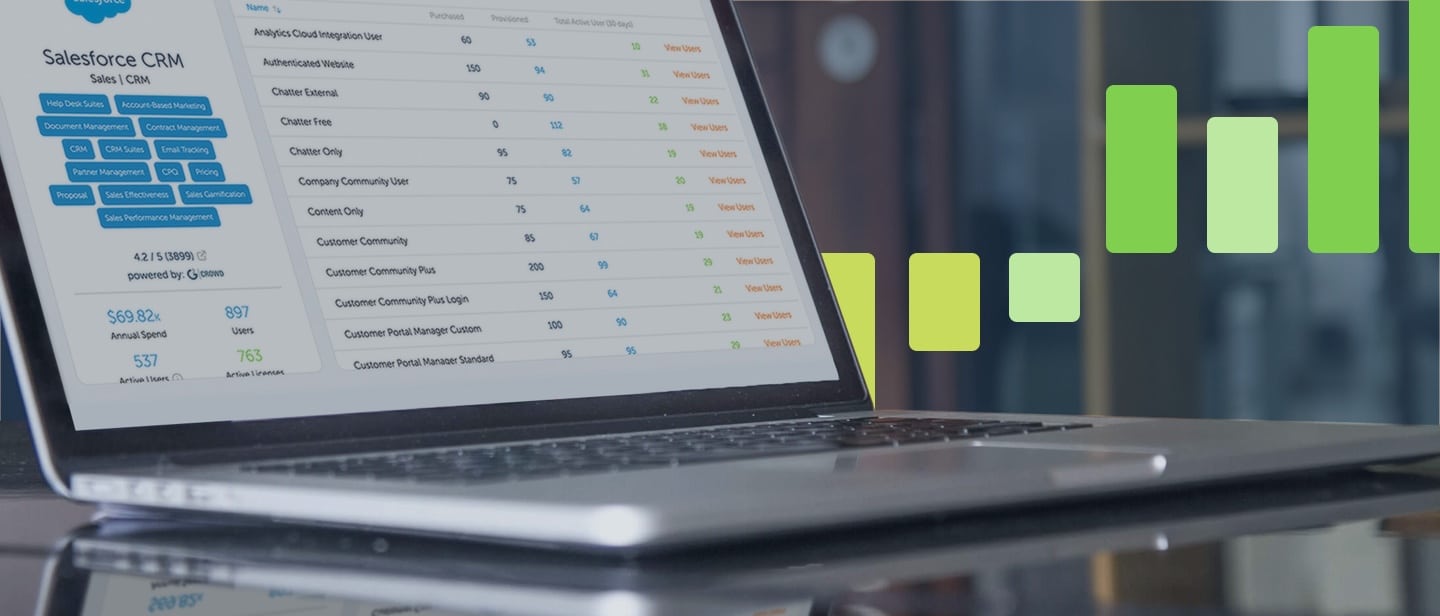
How to Build a Savings Pipeline for SaaS Renewals
Table of Contents ToggleWhat Is a SaaS Savings Pipeline?Why Managing SaaS...
Back
Back
Search for Keywords...
Blog

Table of Contents
Marketing teams are renown for their ability to spend money, big money. From events to media, on average, marketing budgets can surmount 13% of company revenue.
In the digital age, much of the budget is spent on technology, specifically SaaS applications. In fact, Lindsay Tjepkema, former Marketing Director & Global Head of Content at Emarsys, reports that marketers use between 6 and 10 different tools to manage campaigns and data.
Additionally, 80% of marketing executives adopt between 1 and 5 new technologies annually. Yet, when marketers buy and implement new technology, all too often, one important key player is overlooked: Research, purchase, and implementation all take place without IT.
Because tech investments can greatly influence a team’s productivity, budget, and security, Emarsys recommends that marketing teams prioritize alignment with IT. In the age of SaaS, marketing and IT collaboration is key to driving business value. Together they can leverage SaaS optimization to maintain a healthy tech stack.
Traditionally, IT was a blocker. When approached with potential tech investment, IT was known to shut down progress and control all tech-related decisions. As a result, marketing teams avoided including IT in tech purchases. Instead, marketing expenses most SaaS subscriptions.
However, the world of IT is changing for the better. No longer does IT seek to control and own all SaaS purchases. As tech stacks tower beyond the resources of most IT teams, IT leaders must embrace shadow IT: Give the business power to research, purchase, and manage their own SaaS solutions.
Consequently, Lindsay recommends that Emarsys clients break down communication barriers between marketing and IT. At Emarsys, both teams have fostered healthy collaboration and compromise between competing priorities.
Armed with business goals, marketing leaders can approach IT with respect for their expertise. While marketing leaders aim to increase digital conversions, IT aims to secure the enterprise and drive data flow efficiencies.
Together, marketing and IT collaborate to source secure solutions that operate well within the enterprise infrastructure. By including IT in the beginning, marketing leaders can source the right software. Additionally, ongoing inclusion of IT can drive value throughout the lifetime of cornerstone applications.
Today, Lindsay often hears marketers ask, “What’s in your tech stack?”
The question comes as no surprise to Lindsay because, in many marketing teams, technology is driving the strategy. Modern marketers are pressured to be data-driven before every decision, leading to the overzealous purchase of marketing monitoring tools.
Consequently, with technology in the driver’s seat, businesses are building towering tech stacks of point solutions. Rather than providing value, the glut of technology solutions causes death by data: Superfluous applications become underutilized and fail after implementation.
To combat failed tech adoption, business leaders should re-evaluate the role of technology and shift the culture within their departments.
Thanks to the digital transformation, IT leaders have been long tasked with defining the value of tech within an organization, as well as shifting culture around tech use and purchase. Therefore, IT will be marketers’ top allies when shifting the focus from application quantity to quality.
At Emarsys, Lindsay ensured that business goals are the purpose; technology is the means. Keeping business goals top-of-mind, Lindsay can ensure return on adopted SaaS applications. Meanwhile, IT can help monitor current applications and inform innovation efforts.
When IT and marketing collaborate to find a balance between marketing goals (leads, customer experience, etc.) and enterprise IT goals (data flow, security, etc.), both teams and the enterprise become more effective and productive.
Unsurprisingly, shadow IT is a hot topic among technology leaders. In fact, over 73% of enterprise SaaS spend lives outside IT and 80% of employees admit to using unvetted software at work. As Lindsay points out, this shadow IT can prove dangerous to marketing budgets and enterprise security.
With freemium and low-cost SaaS subscription options, shadow IT proliferates in tech-forward enterprises, seemingly with little to no cost to the users.
However, time and security are valuable assets to any company: When marketing tech proves ineffective or stores sensitive data, the cost of implementation is higher than the monetary value of the recurring SaaS subscription.
Therefore, before optimizing the tech stack, uncover the applications in which employees invest their time, money, and data.
Often, SaaS discovery begins with a spreadsheet. Teams can manually track the spend, function, owner, and renewal date for each application. Even so, at Zylo we have found that enterprises underestimate their SaaS stack by 2x to 3x.
Therefore, IT must often dive into the companies financial records to ensure that business units have captured all SaaS subscriptions purchased throughout the year. Then, IT and marketing can audit the current solutions and build strategies to optimize the tech stack.
Once again, most marketing teams are adopting up to 5 applications annually. The high quantity and continued growth of marketing tech stacks are too often increasing “death by data” rather than increasing value.
Consequently, Lindsay advises that many tech-forward marketing teams reduce their tech stack to derive more value from each investment. With your SaaS system-of-record in tow, begin optimizing your tech stack by:
At Zylo, our IT and Procurement customers believe that the goal is not to spend less on technology but to spend smarter. By promoting the collaboration between marketing and IT, Lindsay has been able to ensure that tech purchases are smarter, safer, and more effective for marketing and the entire enterprise.

Table of Contents ToggleWhat Is a SaaS Savings Pipeline?Why Managing SaaS...

Table of Contents ToggleWhat FinOps Means in the Modern Cloud EnvironmentWhy...

Table of Contents TogglePrepare Marketing and IT for Ongoing CollaborationDefine the...

Table of Contents TogglePrepare Marketing and IT for Ongoing CollaborationDefine the...
| Cookie | Duration | Description |
|---|---|---|
| cookielawinfo-checkbox-analytics | 11 months | This cookie is set by GDPR Cookie Consent plugin. The cookie is used to store the user consent for the cookies in the category "Analytics". |
| cookielawinfo-checkbox-functional | 11 months | The cookie is set by GDPR cookie consent to record the user consent for the cookies in the category "Functional". |
| cookielawinfo-checkbox-necessary | 11 months | This cookie is set by GDPR Cookie Consent plugin. The cookies is used to store the user consent for the cookies in the category "Necessary". |
| cookielawinfo-checkbox-others | 11 months | This cookie is set by GDPR Cookie Consent plugin. The cookie is used to store the user consent for the cookies in the category "Other. |
| cookielawinfo-checkbox-performance | 11 months | This cookie is set by GDPR Cookie Consent plugin. The cookie is used to store the user consent for the cookies in the category "Performance". |
| viewed_cookie_policy | 11 months | The cookie is set by the GDPR Cookie Consent plugin and is used to store whether or not user has consented to the use of cookies. It does not store any personal data. |
